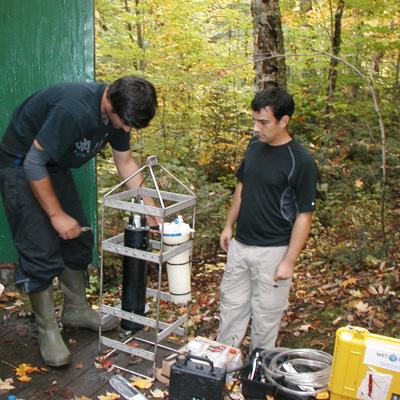A Northeastern North America Environmental Sensor Network: A New NERC Working Group

Electronic environmental sensors and associated data logging have been with us for nearly three decades. They have become standard in environmental monitoring and research but remain a challenge to deploy and "do right." Within the past decade, the selection and capabilities of sensors have advanced rapidly, and transmission of data to the world in real time has become commonplace. Sensors are used to monitor stream flow, water quality, groundwater table, sap flow, and trace gas movement. Webcams have improved quality and frequency of phenological measurements (seasonal changes in plants) and observations of bird behavior, and radio collars track fish and wildlife movements.
To keep up with this quickly shifting electronic landscape, NSRC researchers started a Northeastern Ecosystem Research Cooperative (NERC) working group on environmental sensors. This group informs, assists, and supports researchers on basic to advanced sensor deployment, data acquisition, and real-time transmission. In addition to this "clearinghouse" function, researchers will team up to advance understanding of environmental processes and response to global change through integrated planning and deployment of state-of-the-art sensor systems.
The working group held an initial planning workshop in fall 2011 and has co-sponsored several training sessions. Ultimately, the vision of this project is to establish a regional, long-term, multi-site, multi-sensor platform for detection of short- and longer-term environmental change for northeastern North America.
